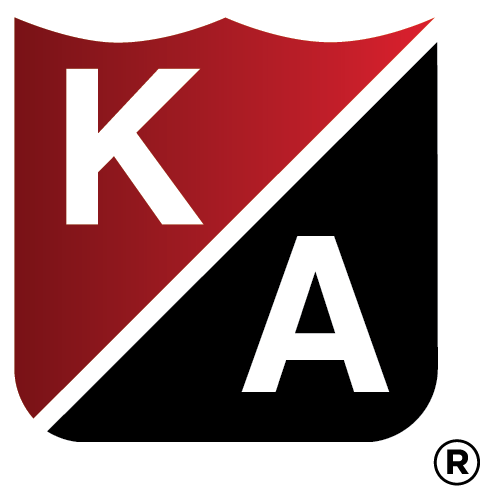Liability is simply an unpleasant word and concept. It is especially so when it is disproportionate to wrongdoing or culpability or the corresponding potential reward. Nevertheless, far too many design professionals take on liability far beyond their own capacity of control or appropriate accountability.
For professional and financial security, as well as favorable professional liability insurance, it is far better to manage any and all liability exposure consistent with two maxims:
- The party with the ability to control a risk should bear that risk; and
- Risk should follow reward.
Unfortunately, far too many design professionals abandon these maxims in a pursuit of the retention and the requiescence that the client would never agree to anything. Some even believe it is “unprofessional” to limit liability as if it were shirking responsibility. It is not. In fact, it is professionally responsible and, in some respects, can appeal to clients. Fortunately, the design professional has options. In fact, there are at least five ways to “limit” liability and several will resonate with the client’s own interests.
The Classic Limitation to Dollars or Fees
The classic and prevailing limitation of design professional liability remains that clause which would limit any liability to the client to a specific dollar amount or the fee received. Such a clause typically provides:
Consultant’s liability to client for any claim or cause of action based on negligence, breach of contract, indemnity or any other theory of liability shall be limited to $_____ or the fee received for Consultant’s services, whichever is greater.
Such clauses or a variation thereof, are valid and enforceable in most states with some variations. (See e.g. Markborough Cal., Inc. v. Superior Court (1991) 227 Cal.App.3d 705.) Where such clauses come under attack or scrutiny, it is most often because the limitation is grossly disproportionate to the fees, project, or cooperative risks and rewards or it is presented as an adhesion contract (i.e. “take it or leave it”) to a “consumer”. Each is addressed in order below.
The limitation must bear some relationship to the project and the corresponding risks. Simply declaring a flat dollar limit for all projects has been historically frowned upon for bearing no relationship to the project. For that reason, the alternative of the greater of the fee received (i.e. working for free) or a reasonable, but rationally moderate dollar amount has been seen as a more reasonable standard approach. Overcoming the “adhesion” concern is even more contextual. Obviously, disproportionate negotiating power and sophistication is unlikely with a large commercial developer, but is a genuine possibility with a single family homeowners. The simplest avenue to overcome such a concern is to make the clause prominent and even require client initials on that page or paragraph. As an added enhancement, the clause could also provide, “An alternative and higher fee without this limitation will be provided upon request.
It is important to note that even this classic cause is limited in at least two ways:
- First, the protection as typically written and applied addresses only liability to the client and not third parties such as contractors and third party project users. Once attempt to overcome this limitation would be to extend the covered parties to provide “to Client, all Project participants, and third parties”. Even if a court would not extend such a clause to third parties, it may act as an implied indemnity clause or further limit the client liability where third party claims are involved.
- Finally, such limitations often cannot extend to “intentional torts” as a matter of statute or public policy. Such torts typically include willful misconduct, fraud, and possibly gross negligence.
The Insurance Limitation
The simple and unfortunate reality is that uninsured risk threatens careers, firms, and personal lives. Accordingly, a beneficial and often more palatable alternative to the classic limitation of liability clause is to modify it to limit recovery to available insurance. In that form, it would provide:
Consultant’s liability to Client for any claim or cause of action based on negligence, breach of contract, indemnity or any other theory of liability shall be limited to insurance proceeds, or the fee received for Consultant’s services, whichever is greater.
Clients often accept such an alternative as it correlates to the contractual insurance coverage they have already required.
In reality, such a clause has some potential tangential benefits even greater than the classic clause. Specifically, most professional liability insurance does not generally cover “contractually assumed liability” beyond professional negligence. Most often, that “exclusion” impacts design professional liability in the form of a contractually elevated standard of care, warrantees on guarantees, extended indemnity and defense clauses or prevailing party attorneys’ fees clauses. The simple beauty of a limitation of liability to “applicable insurance” is that it implicitly defects liability in these and other areas if it is not insured. It also eases the burden and stress to the design professional to continually monitor such coverage and corresponding changes.
Although somewhat counter-intuitive, such a clause can also be of benefit to the insurance carrier and create a better insurer-insured collaboration. Specifically, given such a clause, the potential for excess claims beyond insurance limits are dramatically reduced.
The No Personal Liability Limitation
Even though most clients of design professionals operate in a limited liability business structure such as a corporation, limited liability partnership, or limited liability company, many will often take the further step to disclaim or waive their personal accountability or liability to the design professional. Such a concern should be even more critical to design professionals who literally put their personal “stamp” on the projects they design. Accordingly, be it mutual or solely for the design professional, design professionals should zealously pursue their own waiver of personal liability. On a unilateral basis, such a clause might provide:
Client expressly agrees that any liability arising out of this project shall be limited to the Consultant and its applicable insurance and shall not be the basis of personal liability as to Consultant’s owners, officers, directors, or employees.
The Damages Limitation (Waiver)
One blessing of professional liability insurance for design professionals is its broad coverage and application to many categories of damages. In fact, design professional liability insurance tends to be for broader than the typical insurance carried by contractors and developers. Even worse, such extended liability is frequently outside the design professional’s direct control and contrary to the contract maxim, “The party with the ability to control a risk should bear the risk”.
Perhaps due to the lack of control or the insurance coverage dichotomy, most standard industry agreements limit the categories of covered damages by a mutual waiver. This is true of both the American Institute of Architects (“AIA”) and The Association of General Contractors (“AGC”). In fact, the AGC goes furthest for the benefit of even the design professional AGC Consensus Doc 240, Paragraph 5.4.1 provides:
The Owner and the Design Professional waive claims against each other for consequential damages arising out of or relating to this Agreement, whether arising in contract, warranty, tort (including negligence), strict liability, or otherwise, including but not limited to losses of use, profits, business, reputation, or financing, except for those specific items of damages excluded from this waiver, as mutually agreed upon by the Parties and identified below. The Owner agrees to waive damages including but not limited to the Owner’s loss of use of the Project, any rental expenses incurred, loss of income, profit, or financing related to the Project, as well as the loss of business, loss of financing, loss of profits not related to this Project, or loss of reputation, or insolvency. The Design Professional agrees to waive damages including, but not limited to, loss of business, loss of financing, loss of profits not related to this Project or, loss of reputation, or insolvency. The following items of damages are excluded from this mutual waiver: [_____].
This waiver, and those like it, most often turn on the legal nuances distinguishing direct damages from “consequential” damages. Direct damages flow directly from the fault and injury (i.e. the cost to replace a defective skylight) and the damages are necessarily within the reasonable anticipation of the parties. While still related to the fault, consequential damages do not directly flow from the injury itself and are more attenuated (i.e. the loss of use of the room while the skylight is repaired). Absent a contractual waiver, both are potentially recoverable in a claim. However, given the unpredictable and uncontrolled nature of such damages, many construction industry agreements waive such consequential damages as a standard clause. The AIA does so simply by mutually waiving “consequential damages”. However, the limited reference to that specific legal concept alone is sometimes lost on parties, judges, and juries. Accordingly, the AGC approach which expressly includes a non-exclusive list of such consequential damages may be preferred as a template from which to build and add even more specific categories.
The Time Period Limitation
Finally, once a project or assignment is complete, design professionals (and their insurance carriers) should rightly have a horizon to take the project and client off their list of potential worries and exposures and to move on to new opportunities and challenges. The default for such an approach would be the applicable statute of limitation or statute of repose which establish by law an outside date for the assertion of various categories of claims. However, as between the design professional and its client, they can separately establish, clarify, or enhance that horizon by a contractual period of limitation. Many courts have affirmatively endorsed and enforced such a time limit between contractual parties in construction, including design professionals. Such a clause may provide:
Any claim in litigation between these Parties must be filed not later than the earlier of the expiration of the applicable statute of limitation or four (4) years from either substantial completion or Consultant’s last services on the Project. The actual duration for such a contractual period of limitations can vary, but a good rule of thumb would be to correlate such a time period to the statutory time period applicable to a design professional’s claim for unpaid fees in order to create a mutual and consistent sunset date.

David A. Ericksen
David A. Ericksen is a principal shareholder in and immediate past President of the law firm of Severson & Werson in San Francisco, California, and leads the firm’s Construction and Environmental Practices. For over twenty-five years, Mr. Ericksen has specialized in the representation of architects, engineers, construction managers, design-builders, and other construction professionals. Mr. Ericksen’s expertise covers all aspects of such professional practice as lead litigation and trial counsel, as well as being an active resource for risk management, strategic planning, and transactional matters.
He is a trusted and valued resource to design and construction professionals and their insurance carriers across the United States and beyond. He has been repeatedly recognized as an industry leader, including being named a Construction “SuperLawyer” for the last twelve years. He is a graduate of Boalt Hall School of Law, University of California, Berkeley, a former law clerk to the Washington State Supreme Court, and a member of and resource to numerous construction and environmentally-related professional organizations.



